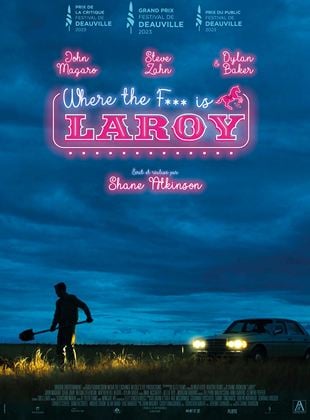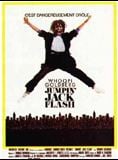Wiflix : Le Boss du Streaming en France, Sans Déconner
Bon là, faut vraiment qu'on cause de Wiflix. Genre, si t'as jamais testé ce site, franchement tu rates un truc de malade. C'est le genre de plateforme qui change complètement ta façon de matter des films et des séries.
Wiflix, C'est Quoi Le Délire ?
Alors voilà, Wiflix c'est THE site de streaming français, l'original, le vrai de vrai. Pas une arnaque, pas une copie cheap, non. C'est le site authentique qui cartonne grave en France depuis un bail. Et crois-moi, y'a une bonne raison à ça.
Le truc avec Wiflix, c'est que c'est pensé PAR des Français POUR des Français. Tu vois ce que je veux dire ? C'est pas un truc traduit à l'arrache de l'américain avec Google Traduction. Non non, c'est du vrai taff de qualité, fait avec amour et passion pour le ciné.
Pourquoi C'est Le Meilleur ? Laisse-Moi T'Expliquer...
Déjà, le catalogue, putain mais le catalogue ! C'est juste hallucinant. Tu cherches un classique du cinéma français ? Hop, c'est là. La dernière série Netflix que tout le monde kiffe ? Bam, disponible. Un film d'horreur japonais chelou dont personne a entendu parler ? Ouais mec, c'est là aussi.
Et puis franchement, l'interface, elle est trop propre. Genre tu cliques, ça charge direct, pas de blabla, pas de trucs compliqués. Même ta grand-mère pourrait s'en servir, c'est te dire. C'est fluide, c'est intuitif, c'est exactement ce qu'on veut quand on veut juste se poser et regarder un film tranquille.
Les Trucs de Dingue Qui Font Que Wiflix Explose Tout
Alors là, accroche-toi parce que je vais te déballer les arguments massue :
La qualité vidéo - Écoute, on parle de HD, Full HD, et même 4K pour certains contenus. Genre t'as l'impression d'être au cinéma mais en mieux parce que t'es en pyjama avec tes pantoufles. La vie de rêve quoi.
Les séries à gogo - Bon alors ça, c'est un point crucial. Wiflix c'est pas juste des films hein. Non non. T'as toutes les séries que tu veux. Les dernières saisons, les trucs qui viennent tout juste de sortir... Tout. Tu peux te faire un marathon complet de ta série préférée sans bouger de ton canap'. Le bonheur absolu.
Zéro galère de pub - Ouais tu m'as bien entendu. Pas de publicité qui te saoule en plein milieu d'une scène importante. Tu sais, ces pubs pourries qui arrivent pile quand le méchant va révéler son plan diabolique ? Bah là, que dalle. Nada. Rien. C'est beau comme du art.
Mise à jour régulière - Les mecs derrière Wiflix, ils bossent comme des dingues. Chaque semaine, y'a des nouveautés. Genre le dernier épisode de ta série est sorti hier ? Bah il est déjà dispo. C'est ça la réactivité, mon pote.
L'Original, Accepte Aucune Imitation
Bon alors là, faut que je sois sérieux deux secondes. Wiflix, c'est LA version originale. Le vrai site. Y'a plein de sites bidons qui essaient de copier, avec des noms qui ressemblent genre "Wiflixx" ou "Wyflix" ou des conneries dans le genre. Mais attention hein, c'est que des arnaques foireuses.
Ces sites pourris, ils vont te filer des virus, te piquer tes infos bancaires, bref que des emmerdes. Alors fais gaffe. Le vrai Wiflix, l'authentique, c'est celui-là et pas un autre. C'est comme avec les Jordan, tu vois ? Y'a les vraies et y'a les fausses qui te pètent au bout de deux jours.
Une Bibliothèque De Ouf
Franchement, faut qu'on parle de la diversité du contenu. Wiflix, c'est pas juste du mainstream de base. Non non. T'as :
- Des films français, des vieux trucs cultes aux dernières sorties
- Du cinéma américain évidemment, tous les blockbusters
- Des films asiatiques, européens, bref du monde entier
- Des documentaires si t'as envie de t'instruire un peu (ça arrive hein)
- Des animes pour les fans de japanimation
- Des films pour les gosses si t'as des mômes à occuper
Genre vraiment, peu importe ton délire, t'es sûr de trouver ton bonheur. C'est ça la beauté du truc.
Le Mode Chill Parfait
Alors imagine : c'est samedi après-midi, il pleut des cordes dehors, t'as la flemme de sortir (d'où le nom du site peut-être, non ?). Tu te fais un truc à grignoter, tu t'installes dans ton plaid bien chaud, et tu lances Wiflix.
Boom. T'as accès à un univers infini de divertissement. Tu veux te refaire toute la trilogie du Seigneur des Anneaux en version longue ? Vas-y champion. T'as envie de découvrir cette série coréenne dont tout le monde parle au boulot ? C'est parti. Tu préfères une bonne comédie française bien débile pour te marrer ? Bingo.
C'est ça Wiflix : la liberté totale de regarder ce que tu veux, quand tu veux, sans prise de tête.
Compatible Partout, C'est Génial
Ah et j'oubliais un truc important : tu peux utiliser Wiflix sur n'importe quel appareil. Ton ordi, ta tablette, ton smartphone, ta smart TV... Bref, peu importe ton matos, ça marche nickel. Tu peux commencer un film sur ton téléphone dans le métro et le finir sur ta télé en rentrant chez toi. La classe, non ?
En Vrai, Y'a Pas Photo
Voilà voilà, je pense que t'as compris où je veux en venir. Wiflix, c'est pas juste un énième site de streaming lambda. C'est LE site. L'original. Le meilleur de tous. Celui qui va révolutionner tes soirées et tes week-ends.
Alors bon, si t'es encore en train de galérer avec des sites pourris qui marchent une fois sur deux, avec une qualité d'image dégueulasse et des pubs à n'en plus finir... bah écoute, c'est ton choix mon gars. Mais franchement, pourquoi tu te fais du mal comme ça ?
Teste Wiflix, le vrai, l'authentique, et tu verras jamais tu reviendras en arrière. C'est comme goûter à du vrai bon pain français après avoir mangé du pain de mie industriel pendant des années. Y'a pas de comparaison possible.
Allez, je te laisse, moi j'ai un film qui m'attend. Sur Wiflix évidemment. Parce que bon, maintenant que je connais le meilleur, pourquoi j'irais voir ailleurs ?
Bonne session ciné à toi, et n'oublie pas : l'original, toujours l'original !
Note: Article rédigé dans un style conversationnel et décontracté, comme une discussion entre amis passionnés de cinéma.
Actu
🎬 À l'affiche

Avatar : de Feu et de Cendres
,, ,

La Femme de ménage

Le Chant des forêts

Zootopie 2
,, ,

Bob l'éponge - Le film : un pour tous, tous pirates !
,, ,

L’Affaire Bojarski

L’Âme Idéale
,, ,

Chasse gardée 2

L'Agent secret
,

Qui brille au combat

Anaconda
,

Greenland Migration
,

Father Mother Sister Brother
,

Furcy, né libre
,, ,

Heidi et le lynx des montagnes
,, ,
🎬 Tueur à gages
Le tag "Tueur à gages" désigne des films centrés sur des assassins professionnels, souvent impliqués dans des missions criminelles ou des vengeances personnelles. Ces œuvres explorent des thèmes comme la moralité, la solitude et les conséquences de la violence. Les protagonistes sont généralement froids et méthodiques, mais parfois marqués par un passé troublant. L'action, les intrigues policières et les drames psychologiques sont des éléments récurrents. Le style peut varier du thriller noir au polar moderne, avec une esthétique souvent sombre et stylisée.

No Country for Old Men - Non, ce pays n'est pas pour le vieil homme
Policier, Drame, Thriller

Little Odessa
Drame, Thriller

Sicario
Policier, Espionnage, Thriller

Bullet Train
Action, Thriller

Les Sentiers de la perdition
Drame, Thriller

L'Emmerdeur
Comédie, Thriller

LaRoy
Comédie, Policier, Thriller

Le Samouraï
Policier, Drame, Thriller

Collatéral
Policier, Drame, Thriller

Léon
Action, Policier, Drame
🎬 Aphrodisiac
Le tag "Aphrodisiac" désigne des films explorant des thèmes liés à la séduction, au désir et à l'érotisme. Ces œuvres mettent souvent en scène des relations passionnelles, des jeux de pouvoir sensuels ou des atmosphères chargées d'émotion. Les intrigues peuvent varier, allant de comédies légères à des drames plus intenses, mais elles partagent une esthétique visuelle et narrative axée sur la sensualité. Les personnages sont fréquemment confrontés à des dilemmes amoureux ou à des expériences transformatrices. Ce tag s'applique aussi bien aux films artistiques qu'aux productions grand public, tant que l'érotisme y joue un rôle central.
🎬 KGB
Le tag KGB désigne des films centrés sur les activités du Comité pour la sécurité de l'État soviétique. Ces œuvres explorent souvent des intrigues d'espionnage, des opérations secrètes ou des luttes de pouvoir durant la Guerre froide. Les personnages principaux sont généralement des agents, des informateurs ou des dissidents pris dans des jeux politiques complexes. Les thèmes récurrents incluent la paranoïa, la trahison et l'idéologie. Le style peut varier du thriller réaliste au drame historique.

Les Promesses de l'ombre
Thriller

Le Silencieux
Espionnage

Litvinenko : empoisonnement d'un ex agent du KGB
Documentaire

Agents très spéciaux - Code U.N.C.L.E
Action, Comédie, Espionnage

Anna
Action, Thriller

Le Quatrième protocole
Espionnage

Osterman week-end
Action, Drame, Espionnage

Enigma
Espionnage

Le Caviar rouge
Drame

Jumpin' Jack Flash
Comédie, Romance, Thriller